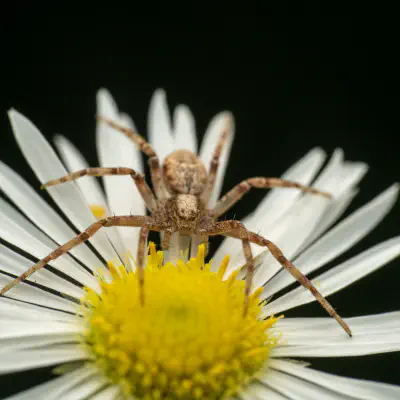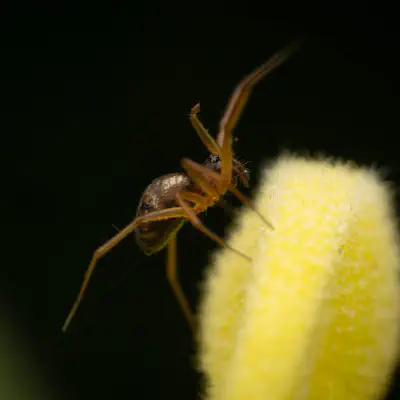Typical Spiders Lat. “Araneomorphae“
Araneomorphae (sometimes referred to as Labidognatha) is an infraorder of spiders. They are distinguished by having fangs that oppose each other and cross in a pinching action, in contrast to the Mygalomorphae (tarantulas and their close kin), which have fangs that are nearly parallel in alignment. With the exception of the Hypochilidae spiders, they have at most a single pair of book lungs. Both Araneomorphae and Mygalomorphae belong to the suborder Opisthothelae, which comprises nearly all…
Hierarchy
Distinguishing characteristics
Most spider species are Araneomorphae, which have fangs that face towards each other, increasing the orientations that they can employ during prey-capture. They have fewer book lungs (when present) – usually one pair – and the females typically live one year.
The Mygalomorphae have fangs that face towards the ground, and which are parallel to the long axis of the spider’s body, thus they have only one orientation they can employ during prey capture. They have two pairs of book lungs, and the females often live many years.
Spiders included
Almost all of the familiar spiders are included in the Araneomorphae group, one major exception being the tarantulas. There are a few other Mygalomorphae species that live around homes or gardens, but they typically are relatively small and not easily noticed. The Araneomorphae, to the contrary, include the weavers of spiral webs; the cobweb spiders that live in the corners of rooms, and between windows and screens; the crab spiders that lurk on the surfaces of flowers in gardens; the jumping spiders that are visible hunting on surfaces; the wolf spiders that carpet hunting sites in sunny spots; and the large huntsman spiders.
Systematics
In older schemes, the Araneomorphae were divided into two lineages, the Hypochilae (containing only the family Hypochilidae), and the Neocribellatae. The Neocribellatae were in turn divided into the Austrochiloidea, and the two series Haplogynae and Entelogynae, each containing several superfamilies. Molecular phylogenetic studies have shown that the haplogynes in particular are not a monophyletic group. A 2020 study suggested the relationships among the major groups were as shown in the following cladogram.
The blue bar to the right shows the former Haplogynae in the sense of Coddington (2005).
External links
Media related to Araneomorphae at Wikimedia Commons Data related to Araneomorphae at Wikispecies
Ancestry Graph
Further Information
„Typical Spiders“ on wikipedia.org
„Typical Spiders“ on iNaturalist.org
Copyright

This article uses material from the Wikipedia article Araneomorphae the free encyclopedia Wikipedia which is released under Creative Commons Attribution-ShareAlike 4.0 International License). On Wikipedia a list of authors is available.

Little beings in print
Order our calendars and books today!
Compiled with love. Printed sustainably. Experience our little beings even more vividly in print. All our publications are available for a small donation.








